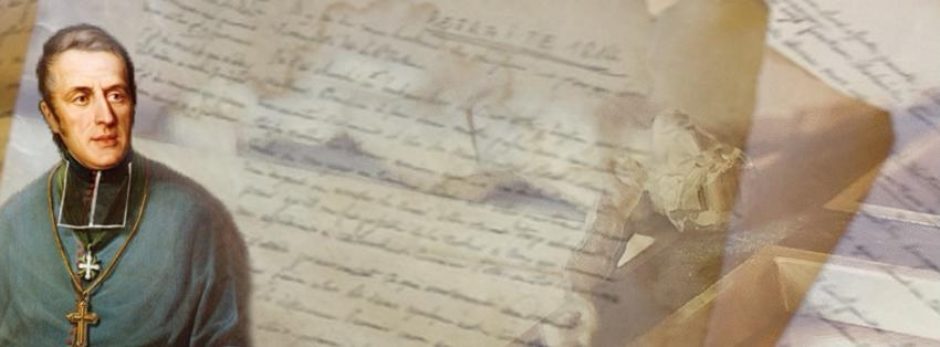Founder-to-founder, Eugene continues his reflections to Forbin-Janson on some aspects of preaching missions. Here he speaks about the important role of the crucifix during missions. Like the Redemptorists, the Missionaries of France used it only when preaching missions. For the Missionaries of Provence, Eugene saw it as a permanent part of their dress and was to stress that it would be the only distinguishing sign.
While on this subject, I take the liberty of telling you that you would have done well to adopt the use of the crucifix, at least during the conducting of your missions. You would hardly believe the effect it produces and how useful it is. People accustomed to ecclesiastical dress are little impressed; but the crucifix to them is awesome. How often have I seen, even amongst libertines [ed. persons with no moral principles], some who, when they see it, cannot help removing their hats.
It gives a decided authority; it distinguishes the missionaries from other priests; and that indeed is good because the missionary should be regarded as an extraordinary man.
It is useful to the priest in the confessional and, on the day of absolution, it helps the penitent, in whose hands we place it, to conceive sorrow for his sins, to detest them and even to weep because of them. It is necessary because what we have experienced has at all times been acknowledged in other Catholic countries, where all missionaries carry it as a sign of authority for their missions etc.
Letter to Forbin Janson, 9 October 1816, O.W. VI n. 14

I want one! *smiles* Well, I want to earn one.
Thank you for this text from the Founder.
At the 34th North American Conference of Oblate Retreat Centres, Jim Deegan, omi gave one of the talks. In it he spoke about Oraison and the Oblate Cross. Two foundational pillars of our community. We are speaking of Oraison and our need for a contemplative prayer that unites us as one body, yet the Oblate Cross. In the past or present if we would be in cassock the Cross was/is present, but how often does that happen? We do have smaller ones many of us wear. But how do we as Oblates world- wide use the cross in our ministry that heals and in way that says, “we are Oblates”. And how do Oblate Associates find strength, solidarity and identity in the “Mission Cross”. Questions that are before us.
Eugene saw his large mission cross as a permanent part of their dress, a symbol of who they were and to whom their hearts belonged. And they were extraordinary men of their times but…
“For the times they are a changing…”
These days there is not the same need to try and set ourselves apart from or distinguish ourselves as being extraordinary. I waited years to receive “my cross”. I had been given a small cross when I returned to the Church and then later a small wooden cross at thend of my Cursillo weekend. But never did it feel so right as when I received my small Oblate cross (crucifix) and allowed it to become a part of who I am – my being rather than my doing. It was/is a constant statement of God’s love for me and of the cross that our crucified Saviour hung on and which I stand at the foot of.
I was like a small child when I received it for I wanted to hold it out and run up to the tabernacle to show it to Jesus. I put it on when I dress myself and take it of when I go to bed. I touch it, caress and hold it, sometimes bringing it up to my lips to kiss it. It has becomefor me a consolation and a way of ‘entering into communion with’. When I see another wearing it I recognize that they are a part of my family and hold a piece of my heart.
As a Lay Oblate Associate there is no need for me to try and distinguish myself by my way of dressing for I am on the journey of becoming exactly who God created me to be: a single lay woman who loves God and has made my oblation to God, the Church and my Mazenodain Oblate Family. It is my being that will give rise to my doing and finally I am becoming quite content with that. I think of my cross and there is a taste of sweetness on the lips of my heart…